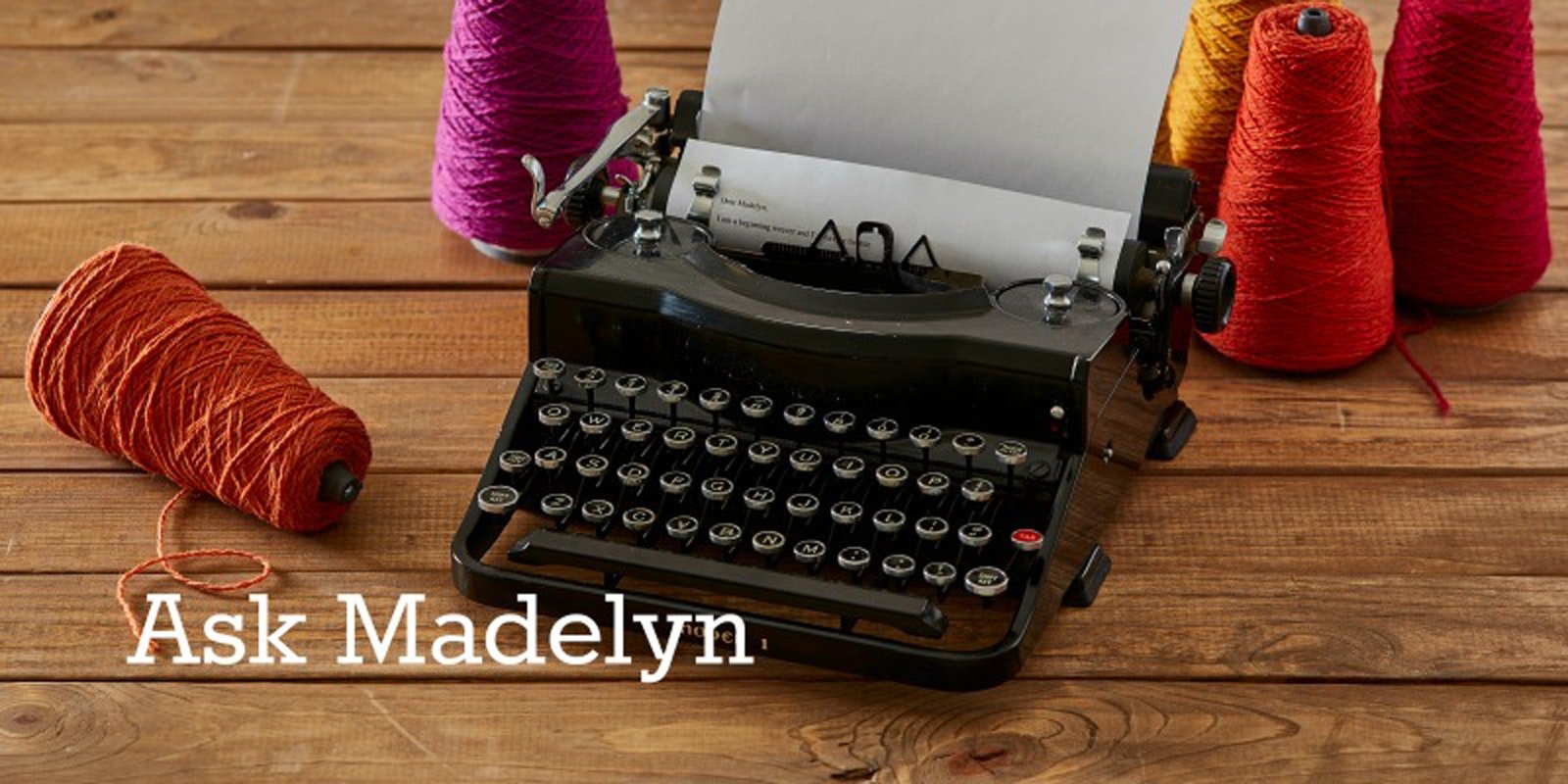Hi Madelyn!
I am going to weave some yardage in stitched doublecloth. I want to mix four cool colors for the face of the cloth and four warm colors for the back. I want the color sequences on both sides to be random. The yarns are 16/2 cotton and I will end up with about 1400 total warp threads 9 yards long. The sett is 24 epi per layer (4 ends/dent in a 12-dent reed). I think the most difficult aspect of this project is going to be warping. I had planned to make two separate warps (one for each face) and warp from front to back. Now I am wondering if there might be a better way to handle this project. If front to back is the best choice I know I will have to move the cross for each of the two warps to the other side of the reed before I thread the heddles so that the threads won't twist. Should I warp back to front? Is there anything else I should be aware of?
—Pat
Hi Pat!
First, I'm guessing that your stitched doublecloth is going to be two layers of twill, which results in a closer doubled sett than two layers of plain weave would be. The stitching will be invisible with twill, producing a fabric with two completely different looking faces—like magic! Except, of course, for putting on that warp.
If you warped back to front in the usual way, you would have to wind every thread in the exact order it will be threaded. If your color order is very random, you'll have to plan the randomness before you start and change colors on the warping board, cutting and tying at changes if there are very many colors (if not, you can wind each around a start or end peg to pick up again when needed). If the randomness has you using every color frequently, you could wind as many as 4 ends together in the cross (2 from each layer) or more with a paddle, wind on using lease sticks in the 4/4 (or more) cross, say, and then just choose the threading order from each group of ends randomly.
If you are planning a color gradation that looks random but actually moves from dark to light, though, you'd to change the colors as you wind the warp.
The easiest warp method would be front to back. You could wind each color separately (seach cool color first, say) and sley each chain randomly in the reed, then wind all the warm colors separately and sley each chain in the reed. You'd end up with 4 ends in each dent but no cross that tells you their order. 16/2 cotton is not a highly twisted yarn, but it isn't very slippery, so beaming could take a very long time as you deal with sticky twisting as the ends come to the heddles.
To avoid that by maintaining an individual cross, you can wind 2 ends at a time, 1 from each layer, in the order the colors are to take in each layer. (In Warping Your Loom, I show how to make an individual cross winding 2 ends). After you sley the reed with 4 ends in each dent, though, you will need to transfer the lease sticks to the threading side of the reed so that you can thread the ends in their exact order.
Front to back alternatives:If you don't want to figure out how to make the individual cross as you wind 2 ends, you can simply wind the 2 ends together holding a finger between them and transfer the 2/2 cross. Twisting will then only take place between pairs of ends.
You can wind the two colorways separately, 2 ends at a time with a finger between them. Tie a cord across the reed and sley the 2 ends of one colorway above the cord and the other below the cord. This way, you would not have to transfer the cross and the twisting would only occur between pairs of ends. The disadvantage of this method is that it taxes your eyes as you distinguish which dent you are threading from and which threads to choose from it. It might be the method I'd pick, though, just to make winding the random colors easier by doing only one warp at a time. You could probably do this back to front, too, winding the two warps separately and suspending and beaming through two sets of lease sticks as you wind on.
Lots of possibilities! Let me know how it turns out. Especially, send a photo of the finished cloth.
—Madelyn

